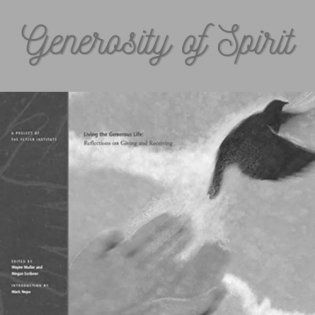Inuit Folktales
When life is at its most difficult and grief is great, a generous sacrifice can move the spirit toward life again. In these folktales, two Inuits face death with a truly generous spirit.
The learner will:
- identify the historical and geographic settings of folktales.
- identify the message and connections to philanthropy.
Youth access to these folktales (Learning to Give has permission to make these folktales available online to readers):
- "The Old Woman Who Was Kind to Insects." Millman, Lawrence, gathered and retold by. A Kayak Full of Ghosts: Eskimo Tales. Santa Barbara: California: Capra Press, ©1987. p. 184. Used with the permission of Lawrence Millman.
- "Tiggak." Millman, Lawrence, gathered and retold by. A Kayak Full of Ghosts: Eskimo Tales. Santa Barbara: California: Capra Press, ©1987. p. 173. Used with the permission of Lawrence Millman.
Instructions
Anticipatory Set:
In the culture of Native Peoples, there is a sharing with nature that shows respect and equity. Discuss whether humans are no more important than plants and animals in nature.
The featured folktales come from the Inuit people. The Inuit lands include the northeastern tip of Siberia, the islands of the Bering Sea, and the coastal regions of mainland Alaska, the north coast and islands of the Canadian Arctic and most of the west coast and part of the east coast of Greenland. On a map, locate these northern lands’ absolute location (longitude and latitude) and relative location (general descriptors of where the places are located). Discuss recognizable physical characteristics and human characteristics.
Read the story "Tiggak" together and discuss the message and connection to philanthropy.
- As a recurring theme, the loss of an only child is a tragedy in any culture. The very first night after the loss of his only son, Tiggak went from deep grief to extreme generosity. What enabled him to make this transition?
- What Native tradition of generosity is in this folktale?
- What is the message of the folktale?
Read the story "The Old Woman Who Was Kind to Insects" together and discuss the message and connection to philanthropy.
- Why did the old woman refuse to eat the insects? What did the insects think of her sacrifice?
- Was the old woman showing generosity? How was her action beneficial for the common good?
- Ask the learners to identify the ideas about dealth in Inuit culture through the folktales.
Philanthropy Framework
-
Strand PHIL.II Philanthropy and Civil Society
-
Standard PCS 01. Self, citizenship, and society
-
Benchmark HS.2 Discuss and give examples of why some humans will sacrifice for the benefit of unknown others.
-
-
-
Strand PHIL.III Philanthropy and the Individual
-
Standard PI 01. Reasons for Individual Philanthropy
-
Benchmark HS.1 Define and give examples of motivations for giving and serving.
-
-
